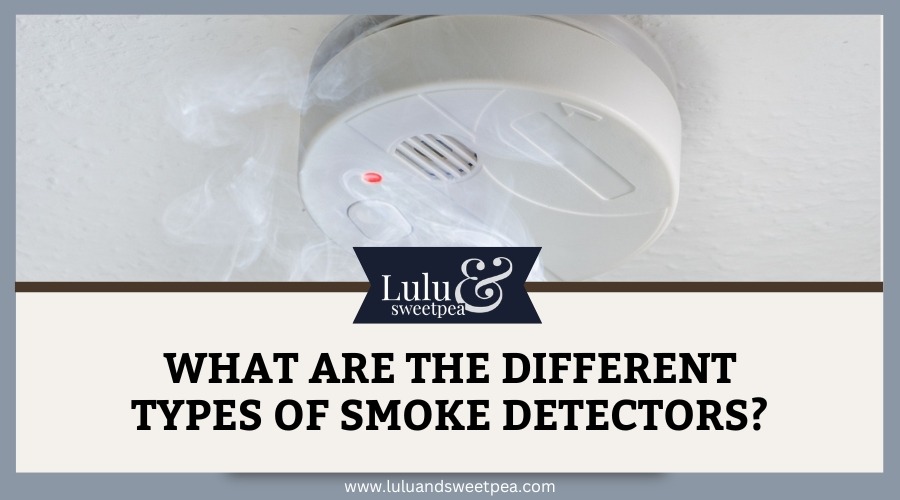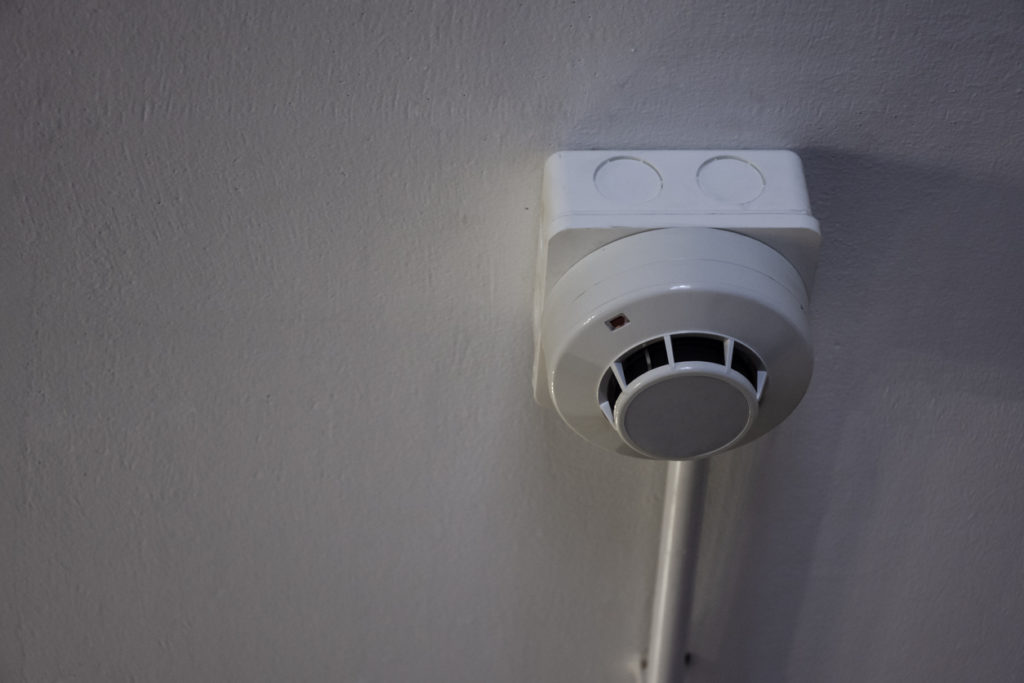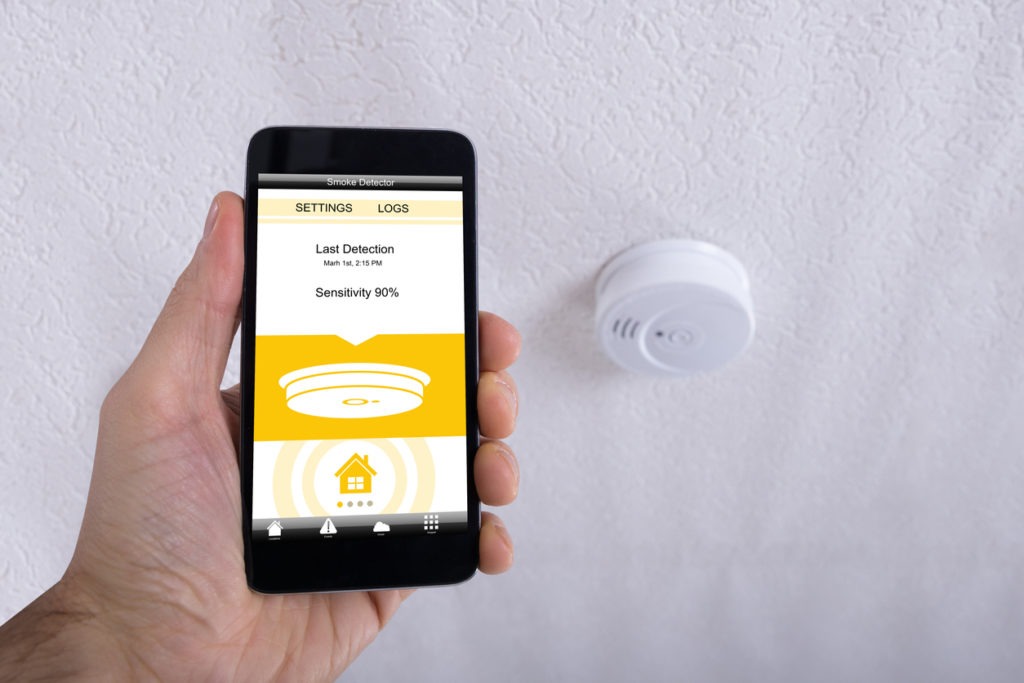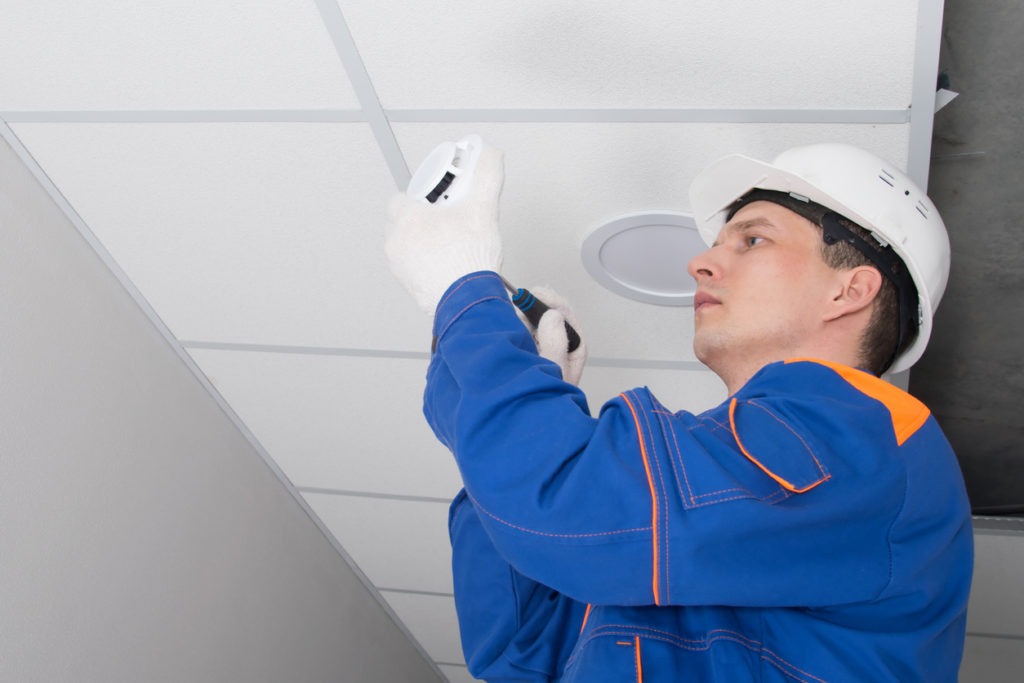Smoke detectors are necessary for any home, but how do you choose the right one for your home?
Smoke detectors are a lifesaver. They detect smoke, which means that when there is a fire in your home, you can be alerted to it and get out safely. But what do you need to know about smoke detectors?
Today’s smoke detectors come in a couple different varieties. Some use ionization technology, while others use photoelectric sensors. The latter kind combines both types of detection into one unit.
All these options have pros and cons, so it’s important to understand what each type offers before making your decision. This article will discuss what each type of detector offers and how they compare.
The Two Styles of Smoke Detectors: Hard-Wired vs. Wireless
Smoke detectors are an important part of your home’s safety system. They can detect smoke from a fire or other emergency, alerting you to the danger and allowing you to take action. There are two styles: hard-wired and wireless.
Hard-Wired Smoke Detector
A hard-wired smoke detector is a type of alarm that uses a battery to detect smoke, carbon monoxide, and other fire hazards. A hard-wired smoke detector is installed directly into your home’s electrical system so it can rely on the power supply to work. This makes a hard-wired smoke detector less expensive than a battery-operated model and allows you to install it in areas where no batteries are available.
Hard-Wired smoke detectors are typically hard-wired into your home’s electrical system through an electrical outlet. For the detector to work properly, it must be plugged into an outlet at all times and plugged into an electrical circuit with its own dedicated power source. This ensures that the device will detect smoke and fire and send a signal from its internal circuitry through your home’s wiring system directly to your home’s central control panel.
Wireless Smoke Detector
Wireless smoke detectors are a great way to keep your home safe. They can be installed in a matter of minutes and are incredibly easy to use.
Wireless smoke detectors detect smoke and send an alert to the user’s smartphone or tablet. The user will then be able to see the location of the detector that has detected smoke and view a video feed from the attached camera.
To install a wireless smoke detector, remove the battery cover on top of the unit, press down on the tab on top of the battery compartment, and slide out the battery tray. Press down on another tab inside the compartment, then put in your battery pack firmly with no space between it and the base of your detector. When you’re done with this step, replace your cover and set up your app!
Hard-Wired vs. Wireless
When shopping for your next smoke detector, you might wonder if you should go hard-wired or wireless.
Well, the answer isn’t quite as simple as “hard-wired is better” or “wireless is better.” It depends on what kind of home you live in and how much money you want to spend—and there are pros and cons to both options.
Hard-wired smoke detectors are great because they’re easy to install and don’t require any new wires or batteries. But if they go off while no one is home, they’re not going to alert anyone until someone comes back in from outside—which can be dangerous if an actual fire happens.
Wireless smoke detectors are a little more expensive than hard-wired ones. Still, they have the advantage of sending alerts when no one is home (or even if it’s just a small fire that doesn’t trigger the hard-wired detectors). This makes them a good choice for households where people come and frequently go (like families with pets or children who go out often).
Different Types of Smoke Detectors
If you’re looking to protect your home from fire, there are various smoke detectors to choose from. An important thing to consider when shopping for smoke detectors is their detection technology. Some smoke detectors use photoelectric technology, while others use ionization. Some products use two types in one. Check out their differences:
Photoelectric Smoke Detector
The photoelectric smoke detector is one of the most common types of smoke detectors. It works by using light beams to detect smoke particles in the air. When the detector detects smoke, it sends a signal to an alarm system or directly to a fire station.
Photoelectric Smoke Detectors are battery-operated and can be installed anywhere in your home, including on ceilings, walls, or floors. They are best suited for rooms with high ceilings or areas that don’t receive much sunlight, like basements and attics. Because Photoelectric Smoke Detectors rely on light to detect smoke particles, they’re not very effective at detecting smoldering fires, which are slow-burning fires producing no visible flames or smoke (like electrical fires).
Ionization Smoke Detector
Ionization smoke detectors are the most common type of smoke detector. They detect smoke by sensing the ionization produced by the heat of a fire. Ionization detectors are best at detecting flaming fires (fires with flames) and are not very effective at detecting smoldering fires (fires without flames).
An ionization detector uses a small amount of radioactive material as its source of ionizing radiation. The radioactive material is sealed in a glass tube called an ionization chamber, which is attached to the alarm’s sides. When smoke enters the chamber, it alters the flow of ions between two electrodes, causing a small electric current to flow through them. This current triggers the alarm when it passes a certain threshold level set by the user.
Dual (Photoelectric and Ionization) Smoke Detector
Dual smoke detectors are more effective than other smoke detectors because they use photoelectric and ionization technology.
Dual smoke detectors can detect different types of fires, including fast-burning fires that produce little smoke, slow-burning fires that produce a lot of smoke, and even smoldering fires that produce no visible smoke but still need attention.
With a dual detector, you don’t have to worry about ensuring you have the right kind of detector in each room. For example, suppose you have a standard ionization detector in your kitchen and want to move it into your living room. In that case, it won’t be able to pick up the smoldering fire burning in front of your TV (or whatever else). But because this type of detector uses both technologies at once, it will still be able to alert you when there’s danger in any room where there’s a fire going on.
What to Look for in a Smoke Detector?
There are a few factors to consider when looking for the best smoke detectors. Since these are going to be an almost permanent fixtures in your house, it helps if you look at the following aspects before finalizing your choice:
The Power Source
Smoke alarms require a professional level of installation. For this, they need a proper source of energy in your house. This is then connected to the other alarms around the house, ensuring they all go off when there’s a threatening problem. Hence, ensure you have at least one fuse box or electronic panel to devote to your wired smoke alarm.
Interconnection
Your smoke detector should ideally be able to link to other devices. These could be other smoke detectors or CO detectors as well. If one gets triggered, all the alarms should go off. This alarm system is one of the safest options to date. Hence, make sure you have such a connection, especially if you live in a medium to a large house.
A Silence Button
Smoke detector alarms can be useful but also quite annoying. They could even damage your hearing if you stand too close. You can always disable the alarm by taking the batteries out, but this is a risky option if you forget to re-install them. A silence button is hence the best option to have.
Light Alarms
If you or a family member is hard of hearing, a flashing light should be part of your smoke detector. Even with no hearing issues, a light can sometimes attract attention where sound fails. To have an extra safety feature, you can also go for a detector that lights up when it’s dark.
Digital CO display
It’s best if your smoke detector also acts as a CO detector. This could be a vital part of your home safety system. Having the CO levels displayed digitally has several advantages, especially if you’re away for some time. You should be able to see the highs and lows that you’re being subjected to every day and stay informed of any irregularities during your absence.
Benefits of Using a Smoke Detector
Smoke detectors are a great way to keep you and your family safe. They can help you sleep soundly at night, knowing that if there’s a fire in your home, you will be alerted before it’s too late.
Here are some benefits of using smoke detectors:
- Smoke detectors can save lives. Half of all fire deaths in the United States occur in homes without working smoke alarms.
- Smoke detectors can save money! A working smoke alarm can reduce the risk of dying in a fire by half—and that’s not counting the cost of damage caused by a fire (e.g., replacing furniture).
- Smoke detectors are easy to install and maintain! You have to change the battery once every year or two (or more often if you live in an area with lots of humidity or dust). You don’t even have to hire someone else to install it for you—you can do it yourself!
- Smoke detectors are usually inexpensive! You can get one for less than $20 at any hardware store or electronics stores like Walmart or Best Buy. Or, if you want something fancier with more features (like wireless connectivity), those are also available for about $30-$40 each.
Hire a Professional to do the job!
The ideal location for smoke detectors is around a foot underneath the ceiling. The box for the device shouldn’t be on a wall stud, so make sure to avoid these. Once you have a clear space, mark where you will install the box and cut holes. It would be best to have an electric panel or a fuse box nearby to pull the required wires.
After installing the box, you have to pull over the required ground wires from the fuse box to your alarm system. Each connection of the wires should be firmly fastened with a wire nut. You would also need to plug in the three prongs of your smoke detector somewhere.
Once you’ve made all the connections and mounted the wall bracket, turn on the detector’s circuit and test the device. This could be done using the test button, which should emit an alarm if pressed for a few seconds.
Conclusion
As you can see, many different types of smoke detectors to consider when buying or installing a new one. It’s important to ask yourself what kind of protection you need and if it’s worth the cost. If you need something that will alert you faster than your current alarm, or if you’re looking for something with a bit more style, you should consider one of these options!



